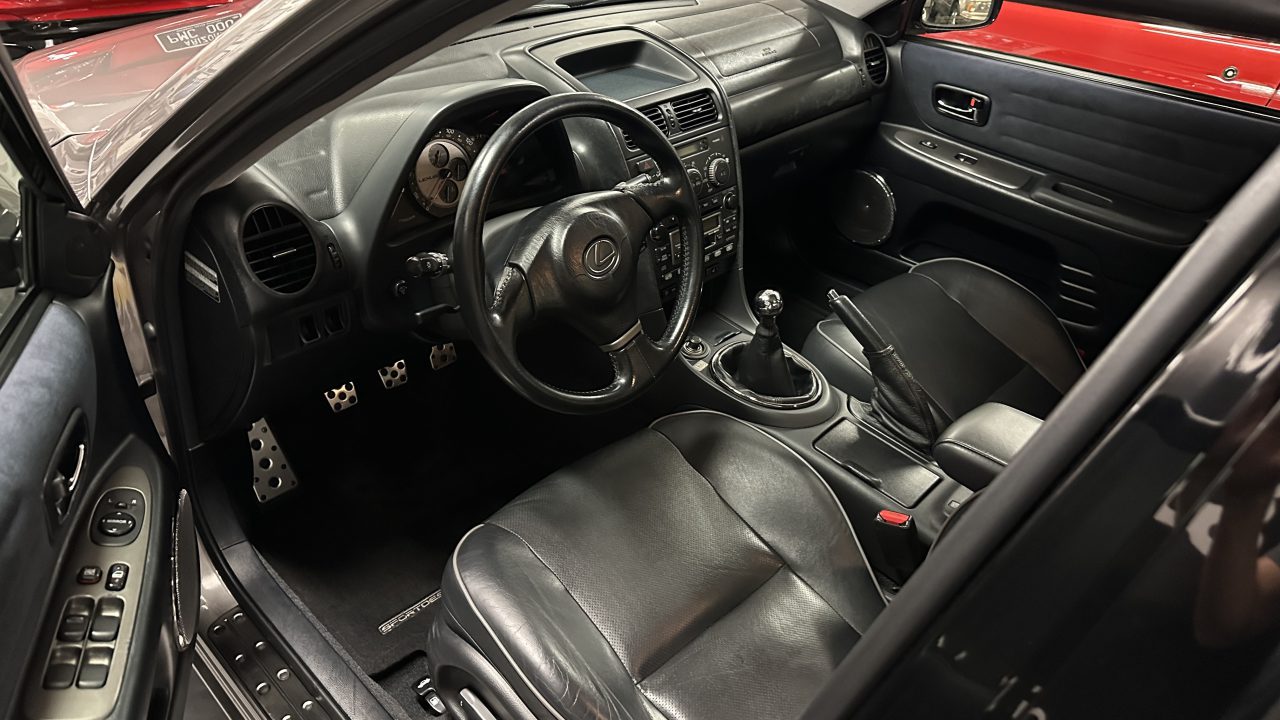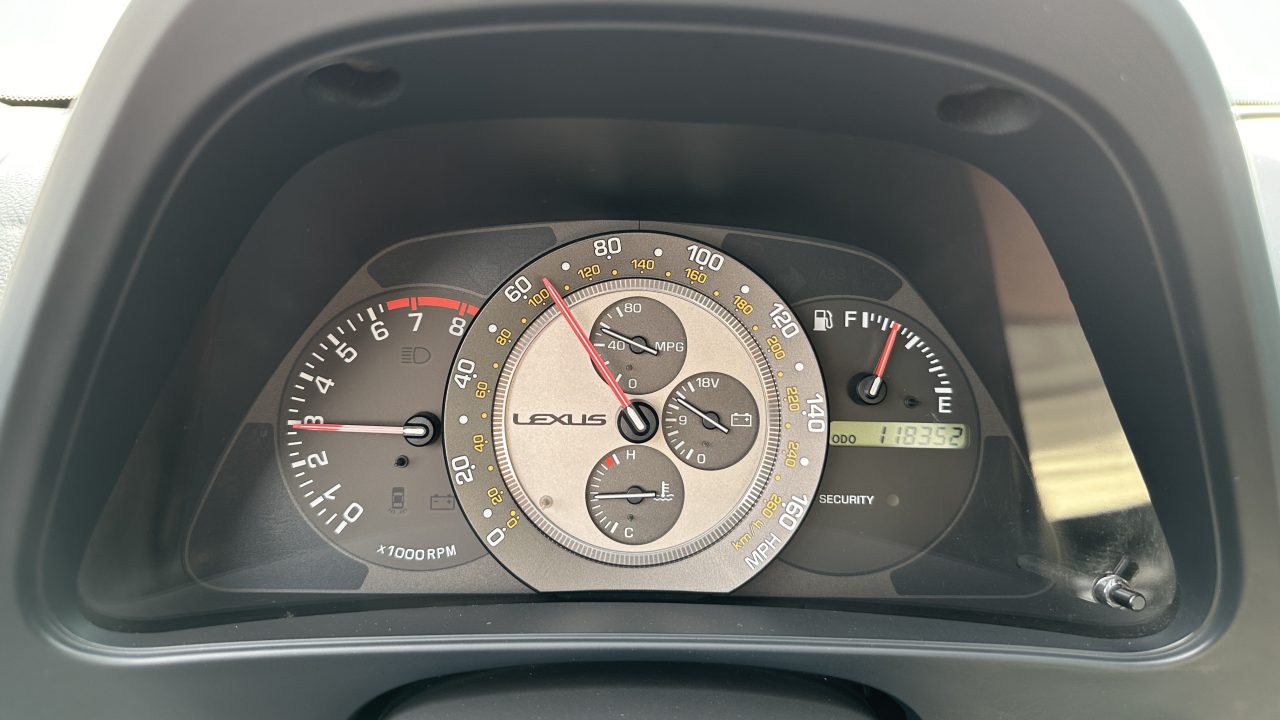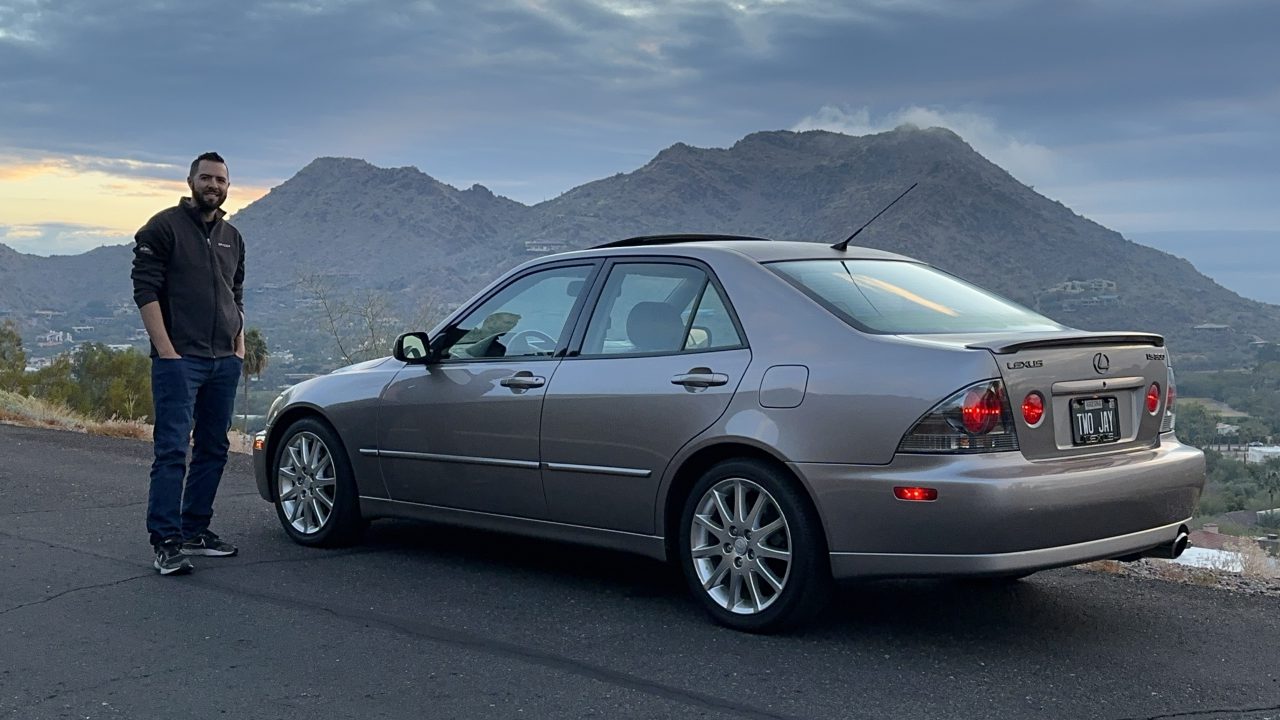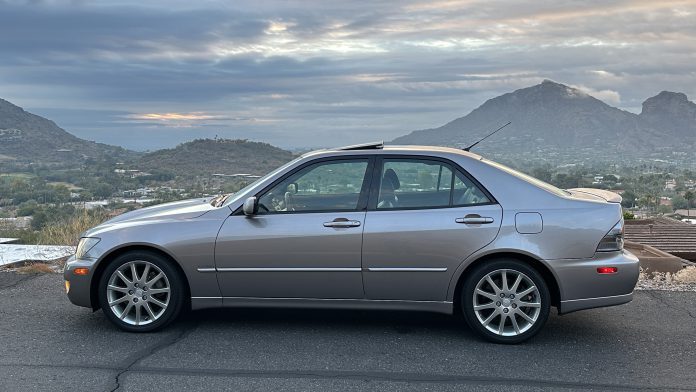“Sport-tuned suspension. Formula 1-style shifting. 215 horsepower. Introducing the high-performance IS from Lexus. Totally unexpected, from the value you always expect.”
Such was the transcript of a 2001-era television commercial about a new sedan entering the market, and over 20 years later, people are still talking about that car.
Lexus made a splash when it came onto the scene in the Japanese luxury marketplace in 1989. Automakers Honda, Nissan, and Toyota had all gone upscale within a few years of each other with their respective marques, and the idea caught on in the North American marketplace. Over the next decade, Lexus had established an identity and a reputation under its slogan “The Relentless Pursuit of Perfection.” The brand’s lineup diversified, too, and in mid-2000 for the 2001 model year, the IS300 compact sport sedan joined the family.

Attracting Younger Buyers
This marked a shift in Lexus’ marketing, because it meant Lexus was now targeting younger buyers with a performance-oriented offering. The base IS300 stickered at $30,805, which was a deep discount compared to the brand’s flagship LS400 at $54,550. Never content to leave well enough alone, Lexus shook up the IS300 lineup just one model year into its lifespan with a station wagon version called the SportCross. The 2004 model year brought a facelift, and the IS300 evolved into its second generation after 2005. In all, Lexus sold 89,744 IS300s in the first generation. Not surprisingly, many are still on the road even two decades later thanks to Toyota and Lexus longevity.
IS300 Attributes
The joy of the IS300 is found in its engine. Under the hood is the venerable 2JZ-GE inline-six. A well-known relative of this engine, the twin-turbocharged 2JZ-GTE variant, became famous for powering the Mark IV Toyota Supra. While offered initially only with a five-speed automatic transmission, a five-speed manual transmission called the “W55” became available on the IS300 shortly a year after the initial launch. The fact that the IS300 shared partial mechanical engineering with the Supra made it a popular platform for tuners and modifiers. Some, like my brother, have built extreme machines out of the IS300.

Interior appointments were innovative for the time. One of the most memorable features of the first-generation IS300 was its chronograph-style gauge bezel with miniature inset gauges for voltage, fuel economy, and coolant temperature. The shifter was a unique metal ball design, and technology was simple and analog. The optional navigation system came with a screen that retracted into the upper dash when not in use.
Does It Meet Expectations?
I recently seized the opportunity to acquire a 2003 IS300 with about 118,000 miles on the odometer. For a 20-year-old car, the fit and finish are remarkably put together. The five-speed gearbox is engaging, the suspension feels tight, the power delivery is more than adequate, and the SportDesign-package adds a bit of cosmetic flair. Included in this package were unique badging, perforated upholstery, a one-off exhaust outlet, special wheels, and other appointments. My favorite part might be the “Thundercloud Metallic” exterior paint tone.


Indeed, this car impresses me in ways I did not expect an older Lexus to – especially coming from a die-hard Honda-Acura background.
Find Your Own
Well-preserved and unmodified early IS300 models are becoming increasingly difficult to track down. Particularly rare models like the five-speed manual versions and the SportCross station wagon versions are even more sought after. I think this car fits nicely into the future collectible category, and I will be discussing its merits during the upcoming Barrett-Jackson symposium on Tuesday, January 23, 2024 at 11:00 a.m. at Westworld of Scottsdale. Come out and see what it’s all about!






A friend of mine had an onyx black 2004 with tan interior and 5 speed that was getting repoed the following week. We had just graduated high school and were in myrtle beach in the summer of 2005. I gladly volunteered to drive that night, and what an awesome car it was.
That’s a rare combo! Very nice car – I was surprised how great the gearbox is.
I really like the earlier Toyo/Lex look. Now, ‘Yodas look like they were designed by 2nd graders on meth, and that Lex “spindle grille”? I enjoyed the “Predator” film. I don’t want it on the front of my automobile.
I tend to agree, I like the understated elegance of these older ones!